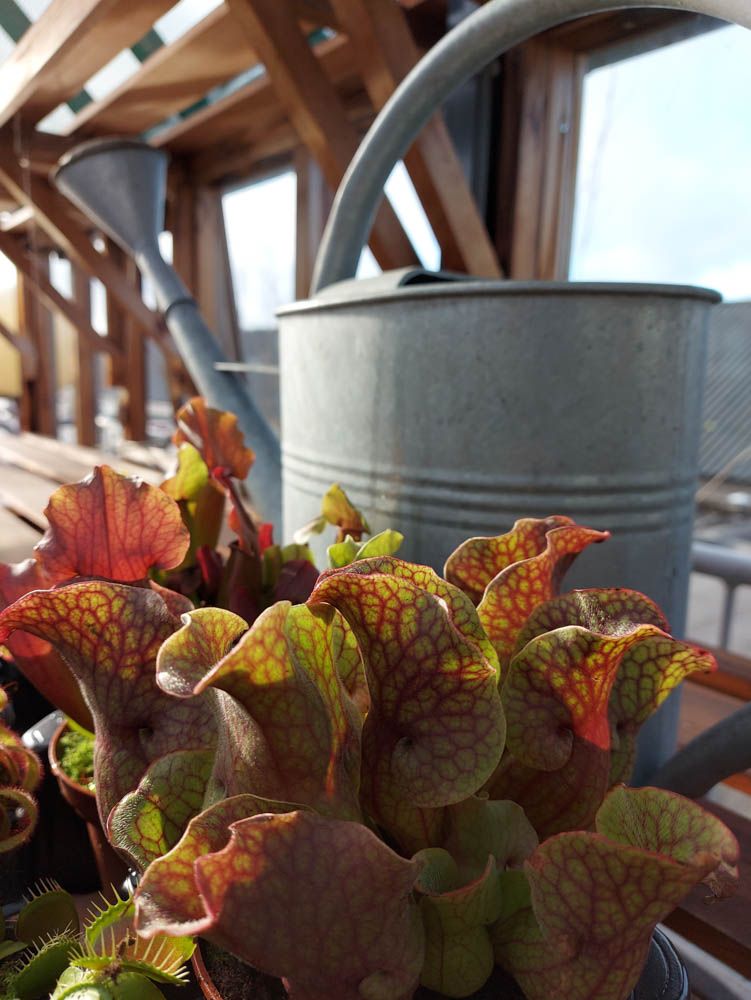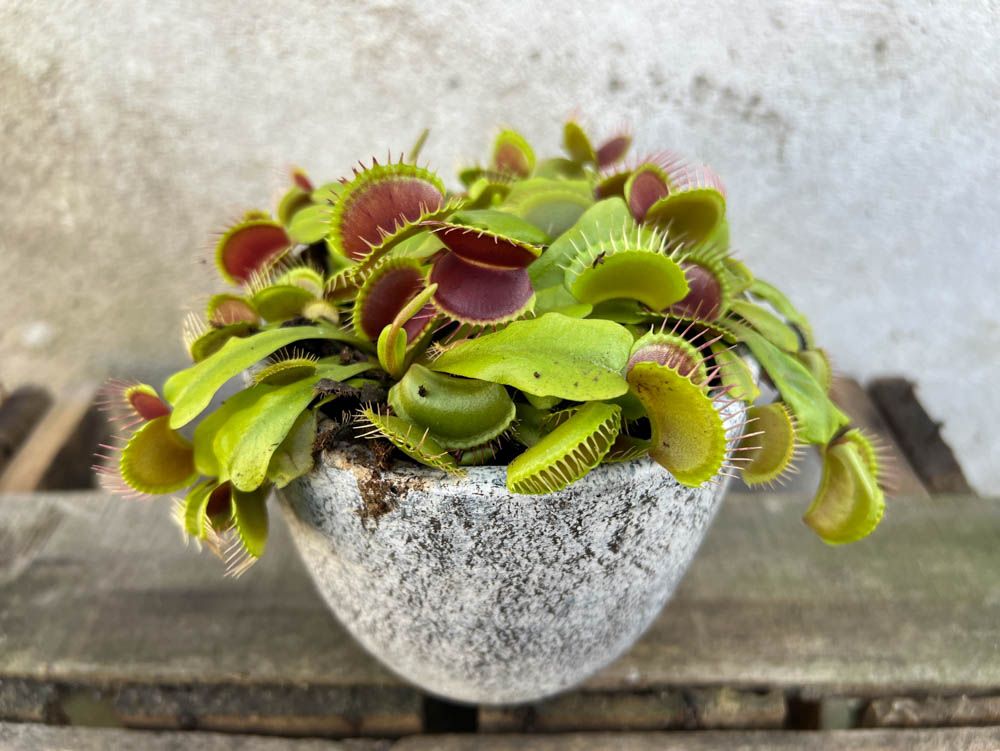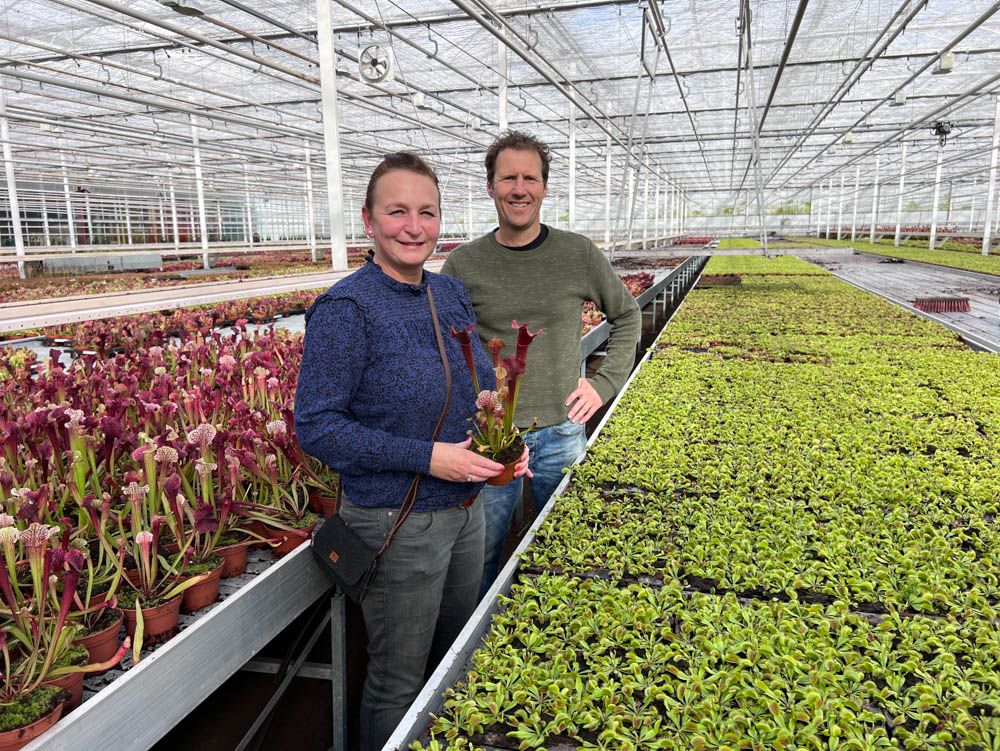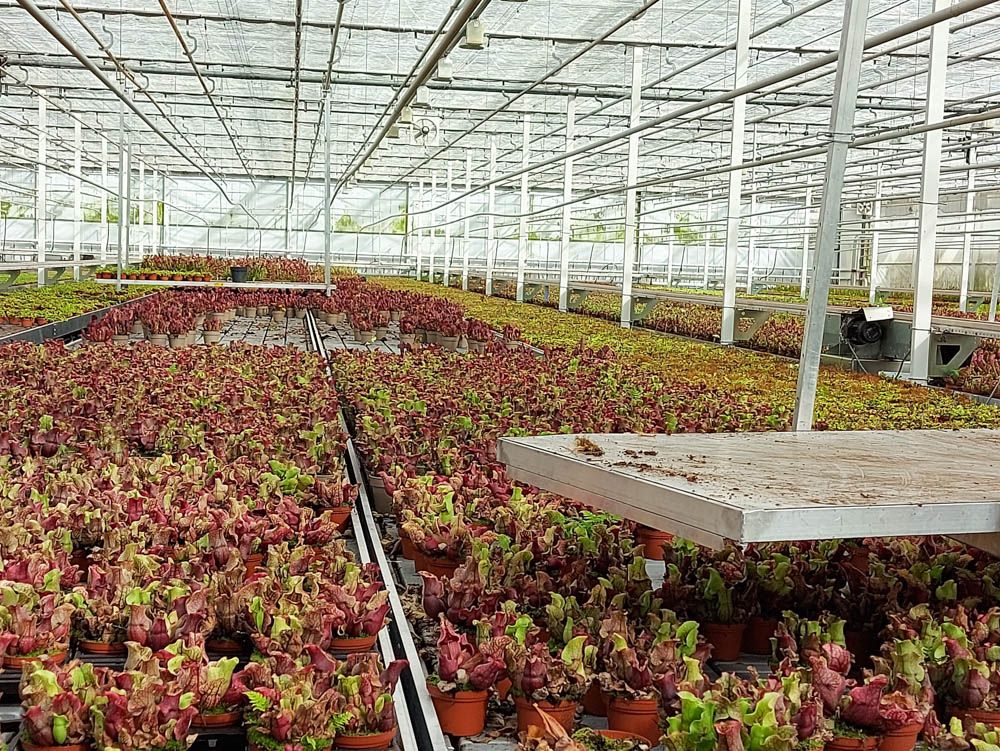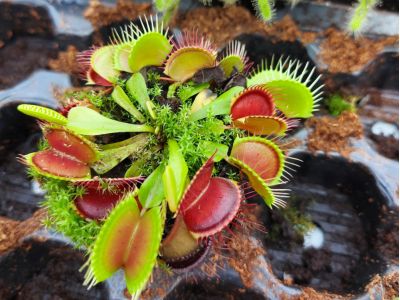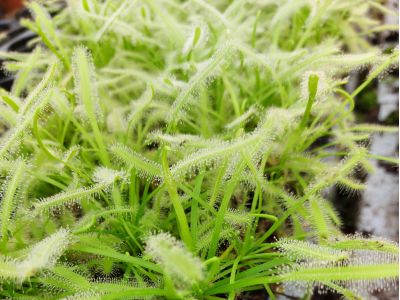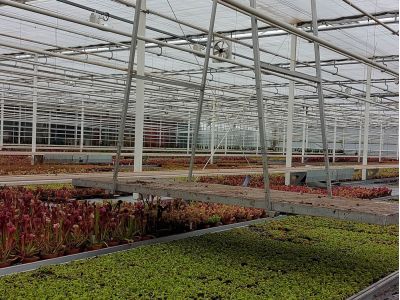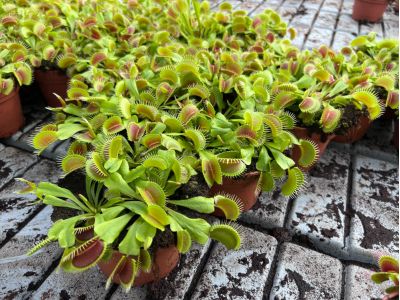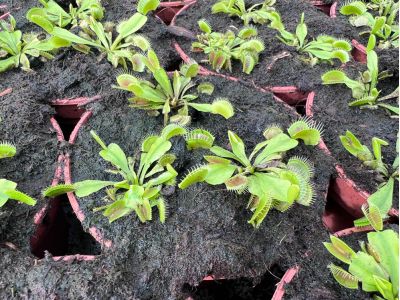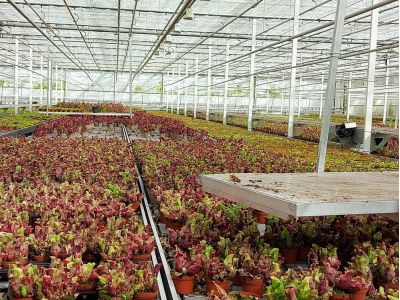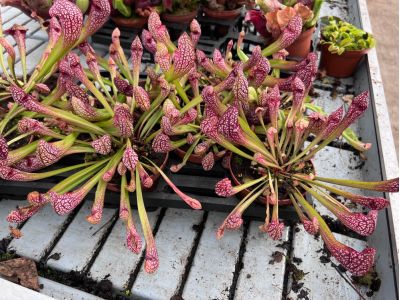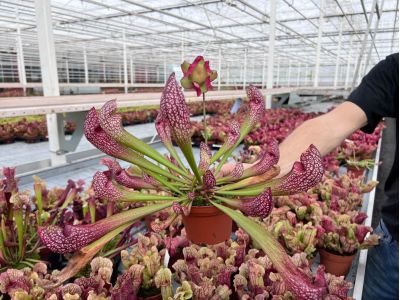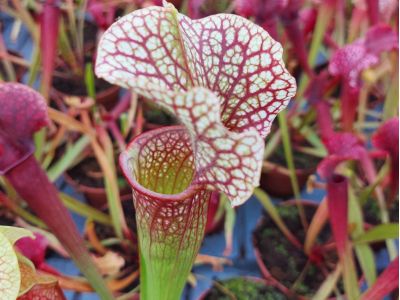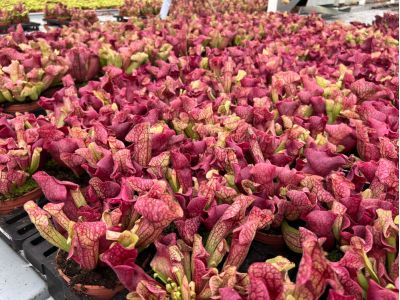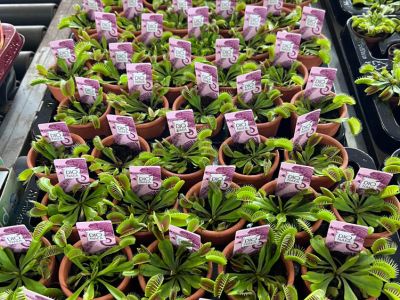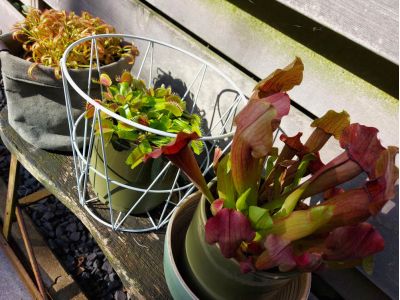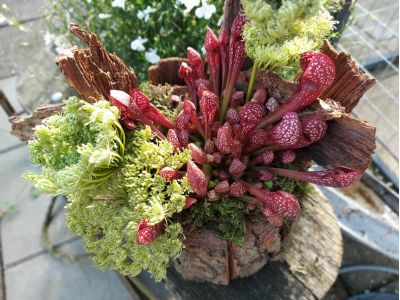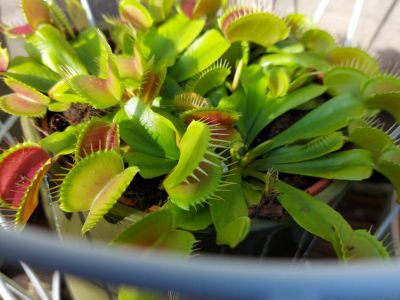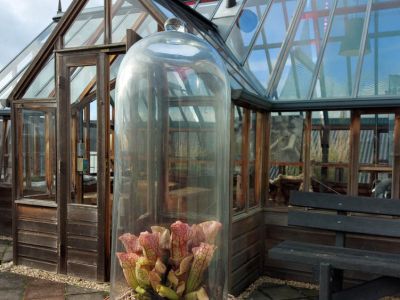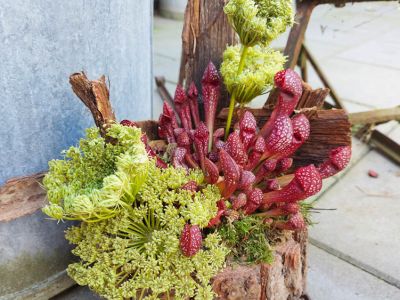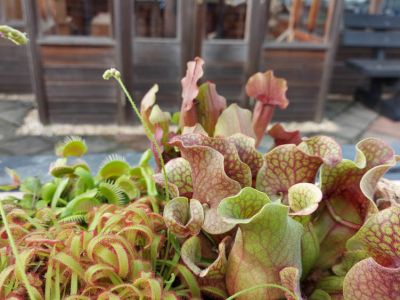Carnivorous Plants
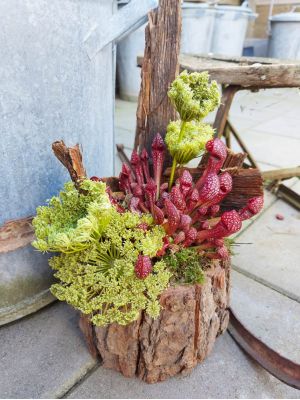
Calendar
In the spotlights
Carnivorous plants… Especially small children find them fun, interesting and fascinating. But adults also secretly cannot keeptheir hands off them and still want to see if the mouths really close and are curious what happens if a fly gets stuck. We also wanted to know more about this special plant family. We visited the Laguna nursery, where Chris Kester told us all about the carnivorous plants.
Laguna
The history of the Laguna company goes back many years. The brothers Ron, Frank and Michel Bakker, together with their father, are originally tomato growers. When this cultivation had to be scaled up considerably, they opted to grow potted plants. They preferred to specialize rather than enter the market on a large scale. Brother-in-law Chris Kester later joined the company.
The men like a challenge and want to grow distinctive plants. Their core business is Medinillas, from breeding to sales and everything in between. In addition, Laguna strives to be a total supplier of special products. In addition to the Medinillas, they also grow Brugmansia, Fatsia Spidersweb, Syngonium Neon, large Peperomia, Cineraria and recently also various types of carnivorous plants.
Carnivorous plants
Carnivorous plants are plants that get their nutrients not only from the soil, but also from small animals. Carnivorous plants are found all over the world, but mainly grow on very poor, moist soil such as swamps.
Laguna currently has three types in its range, which are offered in different concepts.

Sarracenia
Sarracenia, also known as trumpet pitcher plant, grows naturally in a narrow strip along the east coast of America. Sarracenias give off a sweet scent that attracts small flies. Once these flies enter the 'trumpet', they get trapped in the small hairs and become disoriented. They move further and further into the calyx where they eventually get stuck and are digested by the plant.
Sarracenias come in different types and lengths. The longer species grow in warmer regions, the shorter species in cold ones. These are also the species that are hardy and can grow well outside in a pot. They are also perfect for floating on a raft in a pond.
Dionaea
Dionaea, also called Venus flytrap, is the most famous carnivorous plant. The inside of the leaf turns a beautiful dark red due to the sun. The beautiful red leaves, in combination with the sweet substance that is released at the edges of the leaves, make the plant irresistible to small insects. There are a few small hairs inside of the leaf, if these are triggered a few times in a row, the leaves close and the animal is trapped. It takes about ten days for the animal to be digested, after which the leaves slowly open again.
Drosera
Care
Carnivorous plants grow in acidic soils that are low in nutrients. The plants have absolutely no need for food, they get the extra nutrients from their 'prey'. They are soakers! The soil must remain really moist and it is best to water with rainwater. Preferably no water from the tap, they can't handle the limescale in it.
They like a light spot, they can also take a little sun. Older, browned leaves can be removed.
Don't tease
It is of course terribly tempting, especially with the Dionaea, to provoke a reaction in the plant and to make the leaves close. If you run your finger over the hairs in the leaf a few times, it will close. This process costs the plant quite a bit of energy and if it gets nothing in return, it is also wasted energy. The leaf will open again after a few hours, but if this happens too often it will be at the expense of the plant. So don't tease too much!
The cultivation
The cultivation of carnivorous plants was completely new to Chris and his brothers-in-law. After a fellow grower decided to stop and sell his crop, the men eagerly accepted this challenge. After all, it was a fantastic addition to their range.
Cultivation
Sarracenias are propagated by tissue culture. Dionaea and Drosera are propagated from seed. The plants are placed in Laguna's garden as small 'plugs', after which they are repotted the same week in larger pot sizes. On average, the plants need three to four months to grow into a beautiful marketable plant.
Laguna offers the carnivorous plants in various pot sizes, but also as a complete concept in glass. The plants are completely self-sufficient in glass. The moisture regulates itself in the pot. Because the plant cannot catch flies, the plant will not develop further. They will live, but will not grow any further.
FloraPodium, 20 April 2023






